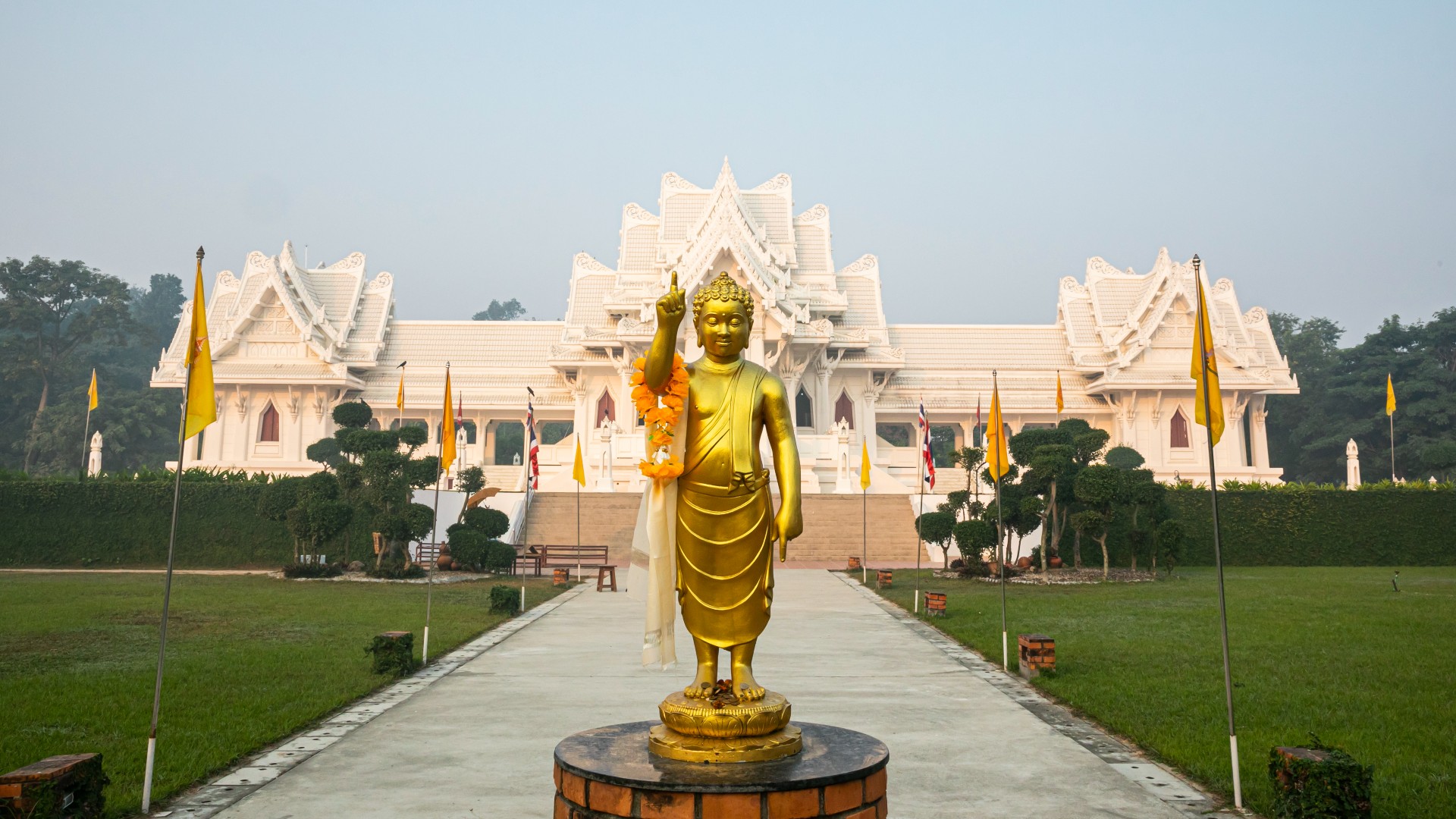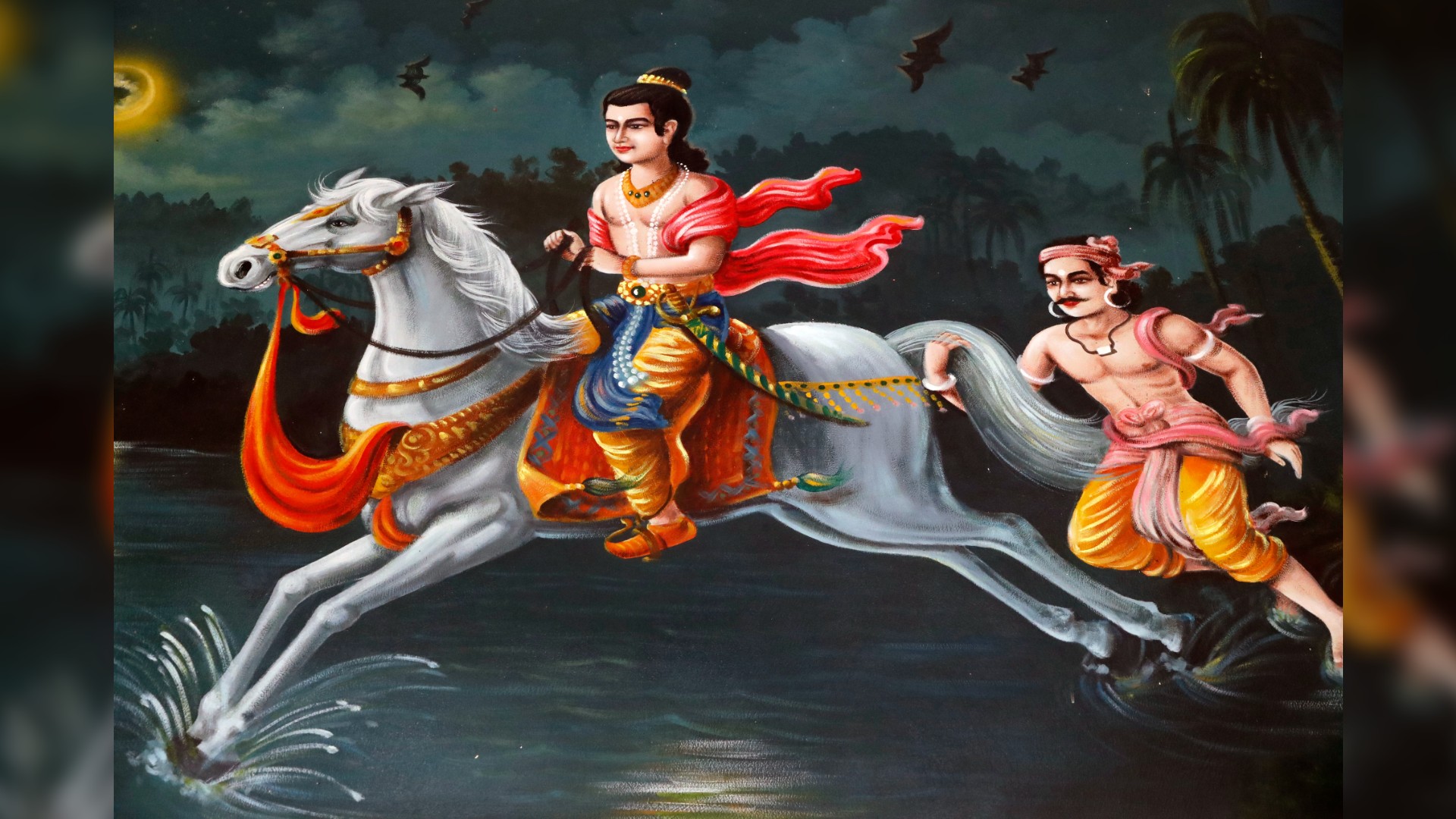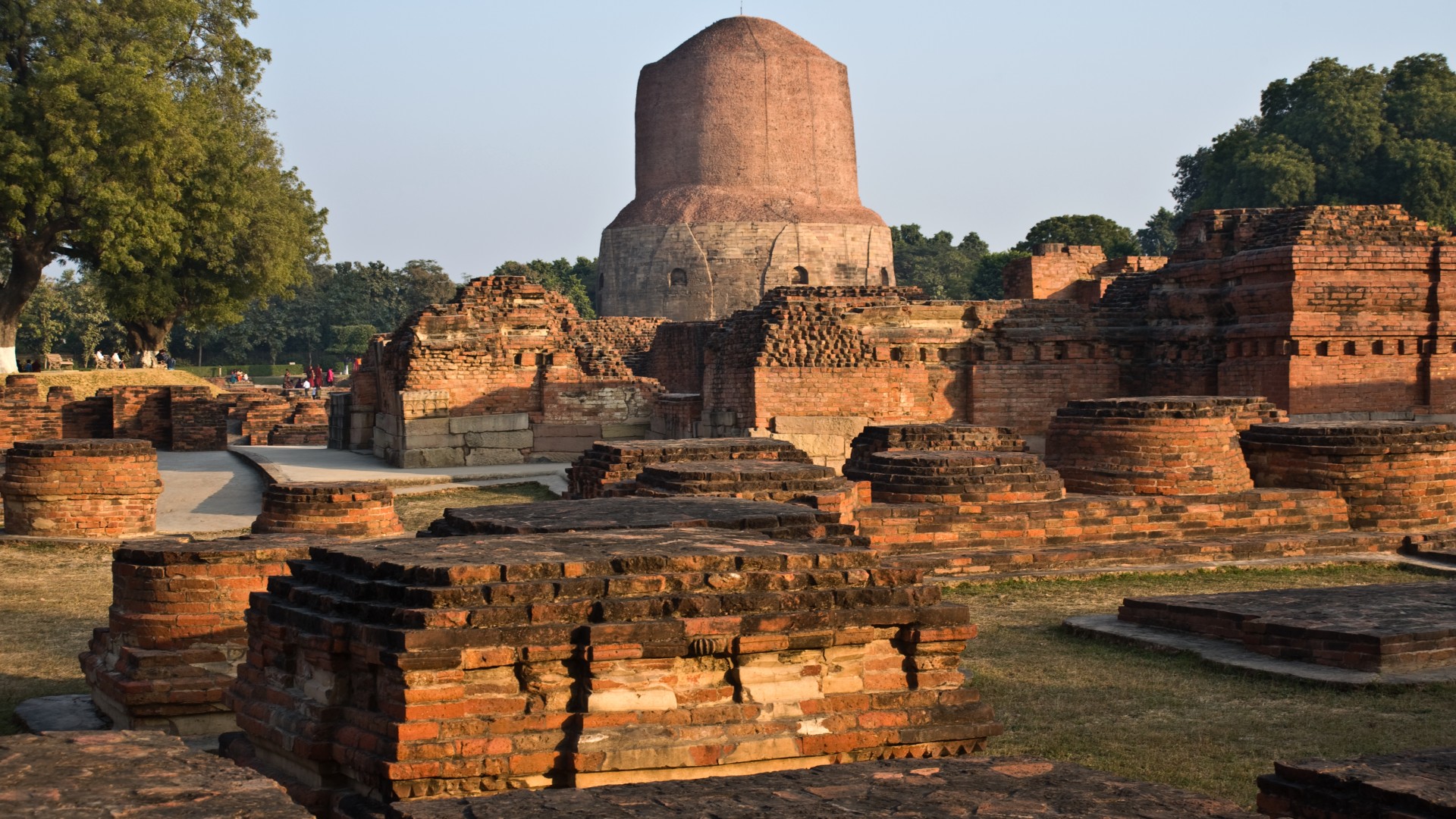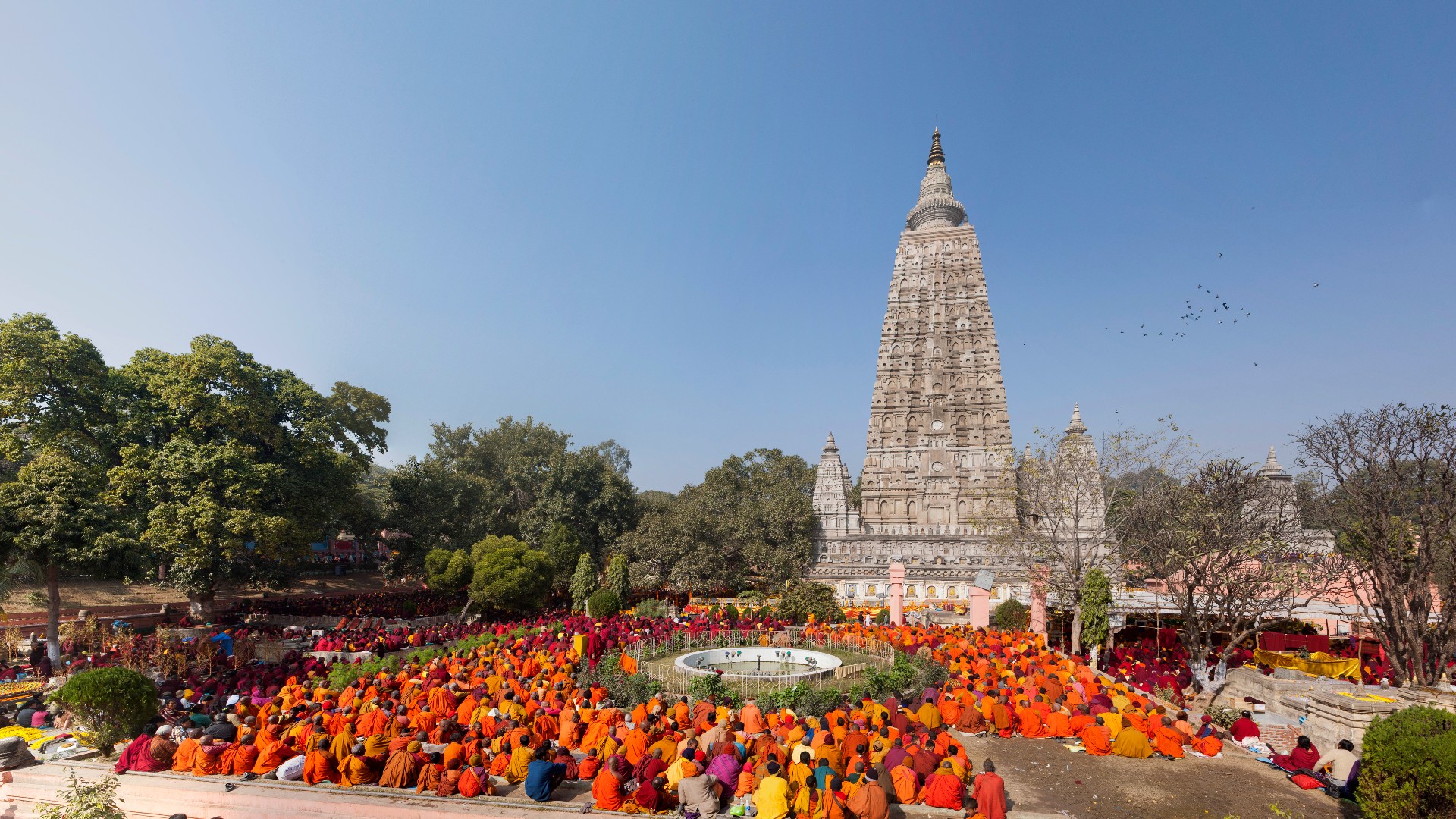The Buddha: History, meditation, religion and images
Over 2,500 years ago, an Indian prince named Siddhartha Gautama achieved spiritual enlightenment and became the Buddha, the founder of the world's fourth-largest religion.
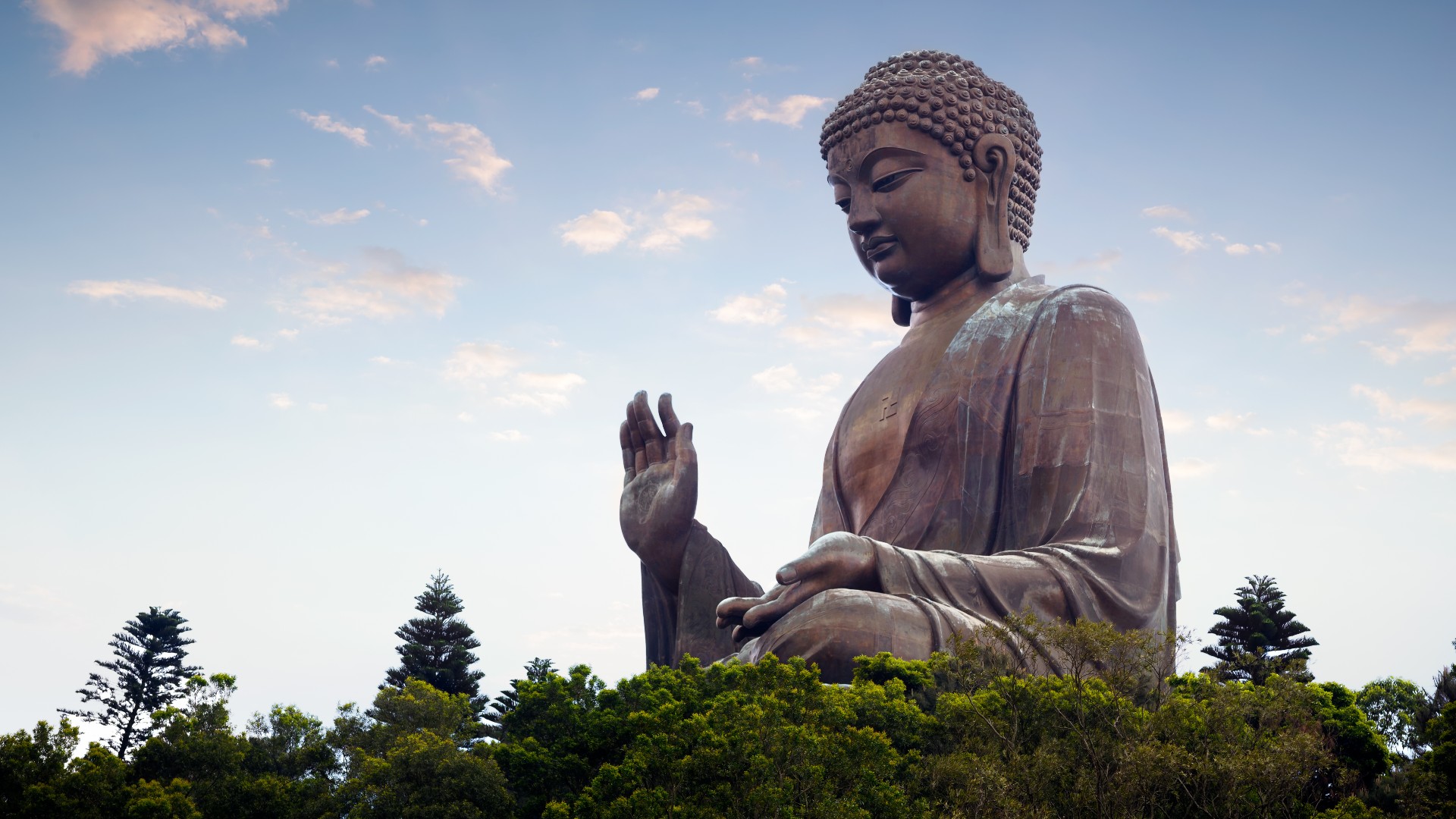
Siddhartha Gautama, also known as the Buddha, was a philosopher and spiritual teacher who lived sometime during the sixth and fifth centuries B.C. in India. He is credited with founding Buddhism — now the world's fourth largest religion with an estimated 500 million adherents — and teaching such concepts as enlightenment, nirvana and the "middle way."
The word "Buddha" is derived from the Sanskrit word budh and is generally translated as "one who is awake." To many Buddhists, the Buddha is a man who achieved spiritual enlightenment — a state of mind in which all traces of personal suffering have been extinguished and reality is viewed with an unfailing clarity.
The story of his life, however, does not form a single, unvarying narrative. There are many variations, and the stories of the Buddha's life and teachings form a vast compendium.
"Buddhist literature is immense," Paul Harrison, the co-director of the Ho Center for Buddhist Studies at Stanford and the chair of the Department of Religious Studies, told Live Science. "I think it's fair to say that Buddhism has more scripture than any other religious tradition. They transmitted all that by prodigious feats of memory." And yet, in spite of all that has been written about him, the historical Buddha is elusive and hard to pin down. "We know about the Buddha only through the records left by his followers down through the centuries," Harrison said. "Unfortunately, we have no independent confirmation of his life. We only have the words of his followers to go on."
Indeed, scholars have had a difficult time distinguishing the facts of the historical Buddha's life from those of legend, and many have relied heavily on the legendary stories.
These legendary stories portray an idealized picture of the Buddha, Harrison said, but they nonetheless likely contain a kernel of historical truth. "But it's not easy to see what that was, nor is it easy to say what he taught," Harrison added. "We have what his followers in the centuries after his death thought he taught, but how much of that is things he said himself and how much is what they remembered? That is something that is currently debated in the field."
The life of Siddhartha Gautama
According to Buddhist tradition, Siddhartha was an Indian prince who was born sometime around 560 B.C. in the town of Lumbini, in what is now southern Nepal. Lumbini was part of the ancient Indian kingdom of Kosala, which was centered in what is now northern India and included parts of southern Nepal. Siddhartha was raised in a palace in Kapilavastu, which historians think was located in either northwest India or southern Nepal, according to World History Encyclopedia. His father was purportedly the powerful ruler of the Shakya clan — one of the families that ruled the region and a member of the warrior (Kshatriya) caste. The Indian caste system divided society into four hierarchical castes or social classes; these consisted of Brahmins (priests), Kshatriyas (warriors), Vaishyas (merchants and traders), and the Shudra (laborers).
Get the world’s most fascinating discoveries delivered straight to your inbox.
There are many stories and legends surrounding Siddhartha's birth. In one of these, according to Britannica, Siddhartha's mother, Maya, received a prophecy when her son was born, saying that he would become either a powerful ruler — even greater than his father — or a renowned spiritual leader. In an effort to bring about the former, Siddhartha's father, Shuddodana (also spelled Śuddhodana), decided his son needed to be cloistered in the palace; at the same time, Shuddodana catered to his son's every need so that the young man grew up in luxury and ease, shielded from all that was ugly, unpleasant or profane. At the age of 16, Siddhartha married a woman called Yasodhara, and later they had a son named Rahula.
"Siddhartha was raised in a very well protected, isolated and privileged environment," Sara Jaye Hart, a lecturer in religious studies at Cal Poly Humboldt, told Live Science. "Today, he would be considered a member of the 1%."
But this idyllic life was not destined to last. When Siddhartha was 29, he had an experience that changed his life forever, and set him on a spiritual path that would mold him into one of the world's most influential religious leaders.
This experience is known in Buddhist lore as the "four sights," and stories of it relate Siddhartha's encounter with four individuals outside the palace grounds. According to the stories, while accompanied by his charioteer, Channa, Siddhartha came across four individuals in succession (in some versions, he encountered the individuals on separate days, each during different excursions outside the palace walls). The first was an old man; the second a sick person; the third a corpse; and the last was a wandering mendicant, or a religious practitioner, typically a monk, who lived by begging.
Siddhartha's sheltered existence hadn't accustomed him to such sights, so he looked to his charioteer — a worldly man — for answers. Channa explained that the first three individuals are the consequences of a normal human existence: we grow old, we get sick and we die. Channa also explained that the last person was a spiritual renunciate — someone who has renounced worldly comforts in favor of seeking spiritual salvation through meditation, begging and asceticism, or strict self-denial.
These encounters pushed the prince into an existential crisis, and he decided he needed to explore the world and find answers to life's questions for himself. Importantly, he was concerned with the topic of human suffering. He wanted to discover a method or philosophical system that would alleviate human suffering. Many people during this time believed in reincarnation, and it was this seemingly endless cycle of death and rebirth that bound one to life — and all life's problems, challenges and travails.
"The story of Buddha, in essence, is the story of someone who had a really profound early mid-life crisis, and he decided he wanted to know more than his privileged upbringing was going to give him," Hart said.
When he returned to the palace, Siddhartha decided to leave his current life behind, including his wife and son, and venture out into the world. In an act symbolic of renouncing his privileged upbringing, he exchanged his fine, rich robes for Channa's coarse tunic, and cut his hair. He first went into the forest, where he joined a group of ascetics who practiced a severe form of self-discipline that included meditation, fasting and, in some versions of the story, fleshly mortification, or physical abuse of the body, according to World History Encyclopedia. Siddhartha stayed with them for several years, learning their disciplines and perfecting his meditation techniques.
"He really mastered the yogic practices during this time," Hart said. "He was clearly devoted and diligent, and even extreme, in his dedication. Part of his asceticism was to limit his food intake, so much so that he ate only a single grain of rice a day."
However, he eventually realized that this extreme form of abnegation was not getting him any closer to answering his questions. So, Siddhartha decided to leave his ascetic companions.
After emerging from the forest, sickly and emaciated, he reached a river, where he encountered a young girl, according to legend. The girl took pity on him and offered him a bowl of cream and rice. The food revived Siddhartha, and he was able to continue his spiritual quest, Hart said.
Siddhartha's experience with asceticism taught him a profound lesson. "He goes on to develop a philosophical practice that really has to do with what is called the 'middle way' — neither asceticism nor indulgence," Hart said.
But Siddhartha was far from content; he was still determined to find a way to end what he believed was the cycle of death and rebirth. So, one day, according to tradition, he sat underneath a tree at a place called Bodh Gaya, in the modern Indian state of Bihar, and vowed not to leave the spot until he became enlightened. In some stories, he sat in deep meditation for seven days and nights, and was beset upon by Mara, a demon who in Buddhism is the manifestation of delusion and desire. Mara tried to prevent Siddhartha from attaining enlightenment by placing a series of obstacles — rain, lightning, storms, demon armies and lustful maidens — in his way. But Siddhartha remained steadfastly devoted to his goal of enlightenment.
His efforts ultimately paid off, according to legend. When he finally opened his eyes, he found himself in the blissful state of enlightenment — a state of mind that is said to give one insight into the true nature of reality and leaves the devotee free from craving, desire and suffering — and knew he had conquered the cycle of death and rebirth. From that time, he became known as the Buddha, the "awakened one." The tree under which he sat became known as the Bodhi Tree ("the tree of awakening").
What the Buddha taught: The Four Noble Truths and Noble Eightfold Path
After attaining enlightenment, Siddhartha spent the remainder of his life traveling around what is today northern India, teaching his insights and gathering around him a community of devotees, or monks. At his first sermon, reputed to be at the deer park of Sarnath in modern-day Uttar Pradesh, India, Siddhartha taught concepts that have come to be known as the "Four Noble Truths" , which the Buddha believed characterize all sentient life. The first states that life is characterized by dukkha, which is a Sanskrit word that is often translated as "suffering," Hart said. But, she added, it is perhaps better understood to signify an all-pervading sense of disquietude or dissatisfaction with the transitory, imperfect, often stressful, and generally non-satisfactory nature of existence.
"Specifically, dukkha is a word that refers to a wagon wheel that isn't quite centered," Hart said. "It refers to an unsettled quality about the world — that there's a 'not-quite-rightness' about the world that causes suffering."
The second Noble Truth states that dukkha has a cause, and the third Noble Truth identifies that cause: desire. "The nature of human desire is that it will never be fulfilled," Hart said. "That's what the Buddha tells us."
The fourth Noble Truth provides a prescription to end suffering: the Noble Eightfold Path. This is essentially a list of mental and spiritual practices to help someone reach the correct moral frame of mind to attain enlightenment. The Eightfold Path consists of the right view, right resolve, right speech, right conduct, right livelihood, right effort, right mindfulness and right meditation.
The death of the Buddha
The traditional date of Siddhartha Gautama's death is in 483 B.C., reportedly at the age of 80. (Harrison, however, places his death at around 400 B.C.). According to Britannica, Siddhartha accepted a meal from a village blacksmith in Kushinagar, northern India; unbeknownst to the blacksmith, however, the food was tainted and Siddhartha immediately fell ill. As he lay dying, the blacksmith came to his side and expressed his great grief that he had inadvertently poisoned the great sage. Siddhartha told him not to grieve but to rejoice because the tainted meal was releasing him from the endless cycle of death and rebirth and allowing him to enter nirvana (in another version of the story, according to Britannica, Siddhartha himself caused the food to become spoiled). Just before he died, Siddhartha told his monks to continue working diligently for their spiritual liberation by following his teachings. These teachings came to be known as the dharma, a Sanskrit word that in a Buddhist context is typically defined as the "cosmic law," according to World History Encyclopedia.
Buddhism spread throughout Asia after Siddhartha's death, especially in China, Tibet, Japan, Korea and in parts of southeast Asia such as Thailand, Laos and Cambodia. Buddhism also spread to Nepal and Mongolia. In India, Buddhism became an important religion only under the influence of King Ashoka (268 B.C. to 232 B.C.), who ruled almost all of modern-day India. Ashoka promoted the religion and sent Buddhist emissaries throughout Asia. However, Buddhism's influence waned in India after Ashoka's death and never again became a major religious force there.
According to Harrison, the Buddha's teachings and life story were originally transmitted orally. "The conventional thinking is that nothing was written down about the Buddha until the first century B.C.E. And that's recently been confirmed more or less by manuscript finds that are very ancient," he said.
Some of the earliest written materials are called the sutras, which are discourses of varying length written in either Pali (an ancient language of northern India) or Sanskrit. The most famous of these is known as the Triple Basket ("Tripitaka" in Pali), which is said to contain discourses attributed to the historical Buddha. Scattered throughout these writings are anecdotes about his life, mostly after the time he renounced his princely life. Accounts of the Buddha's early life come from texts that were written much later — sometime around the second century B.C., according to Britannica. One of these, called the Buddhacharita ("Acts of the Buddha"), was written in Sanskrit as a long poem. These, and other written accounts, are the main sources of Buddha's biography.
Today, the Buddha is revered the world over for his profound spiritual insights, practical philosophy of life and meditative practices. Buddhists and many non-Buddhists laud him as an important thinker and major influence on world history.
"You can understand the Buddha as either a religious exemplar who started a profound, world-changing religion — the first great missionary religion, 500 years before Jesus — or you can think of him as a philosophical thinker and teacher who gave each and every person, regardless of belief or religious affiliation, tools for dealing with the problem of human suffering," Hart said.
Additional resources
To learn more about Buddhism, you can watch the PBS documentary, The Buddha. You can also read about Buddhism at National Geographic. And don't forget to learn about the origins of Buddhism from Stanford scholar Paul Harrison.
Tom Garlinghouse is a journalist specializing in general science stories. He has a Ph.D. in archaeology from the University of California, Davis, and was a practicing archaeologist prior to receiving his MA in science journalism from the University of California, Santa Cruz. His work has appeared in an eclectic array of print and online publications, including the Monterey Herald, the San Jose Mercury News, History Today, Sapiens.org, Science.com, Current World Archaeology and many others. He is also a novelist whose first novel Mind Fields, was recently published by Open-Books.com.


